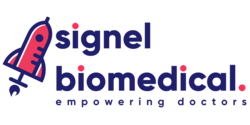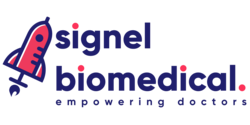10 Effective Strategies to Prevent Patient Infections in Hospitals or Clinics

Infections acquired within healthcare settings, known as healthcare-associated infections (HAIs), pose a significant threat to patients' well-being. Preventing patient infections is a top priority for hospitals and clinics worldwide. By implementing robust infection control measures, healthcare facilities can significantly reduce the risk of HAIs. In this article, we will explore ten effective strategies that hospitals and clinics can employ to prevent patient infections. These evidence-based practices are designed to create a safe and hygienic environment for patients, ensuring optimal care and recovery.
Strict Hand Hygiene Practices
Proper hand hygiene is the foundation of infection prevention. Healthcare workers should adhere to rigorous hand hygiene protocols, including thorough handwashing with soap and water or the use of alcohol-based sanitisers. Regular hand hygiene is essential before and after patient contact, before aseptic procedures, and after handling contaminated items.
Effective Sterilization and Disinfection
Appropriate sterilization and disinfection of medical equipment, surfaces, and patient care items are critical to prevent infections. Healthcare facilities should follow industry standards and guidelines to ensure proper cleaning, disinfection, and sterilization processes are in place. This includes using suitable disinfectants, following recommended contact times and validating sterilization equipment.
Implementation of Standard Precautions
Standard precautions are fundamental infection control measures that aim to minimize the transmission of infectious agents. Healthcare workers must consistently practice these precautions, including the appropriate use of personal protective equipment (PPE) such as gloves, masks, and gowns, to reduce the risk of cross-contamination.
Vaccination Programs
Immunization of healthcare workers and patients is crucial in preventing the spread of vaccine-preventable diseases. Hospitals and clinics should establish comprehensive vaccination programs, ensuring that healthcare workers are up-to-date with recommended vaccines, such as influenza, hepatitis B, and measles, mumps, and rubella (MMR).
Proper Waste Management
Effective waste management is essential to minimize the risk of infections. Healthcare facilities should adhere to guidelines for waste segregation, disposal, and transportation. Proper labelling, use of colour-coded bins, and regular training of staff are critical for ensuring safe waste management practices.
Enhanced Environmental Cleaning
Thorough and regular cleaning of patient care areas, high-touch surfaces, and medical equipment is essential for reducing the transmission of pathogens. Hospitals and clinics should establish comprehensive cleaning protocols, use appropriate disinfectants and ensure adherence to standardized cleaning practices.
Adequate Ventilation and Airborne Infection Control
Proper ventilation systems play a crucial role in preventing airborne infections. Healthcare facilities should ensure adequate air exchange rates, maintain air filters, and employ engineering controls to minimize the risk of airborne transmission. Monitoring air quality and implementing effective measures can significantly reduce the spread of infectious agents.
Antibiotic Stewardship
Appropriate and responsible use of antibiotics is essential to prevent the emergence of antibiotic-resistant bacteria. Hospitals and clinics should establish antimicrobial stewardship programs to promote judicious antibiotic use, including proper prescribing practices, monitoring of antibiotic resistance patterns, and educating healthcare professionals on the importance of antimicrobial stewardship.
Education and Training Programs
Continuous education and training of healthcare staff are crucial for instilling infection prevention practices. Hospitals and clinics should conduct regular training sessions on infection control, hand hygiene, proper use of PPE, and other preventive measures. Staff members should be updated on the latest research and guidelines to ensure best practices are followed.
Surveillance and Monitoring
Regular surveillance and monitoring of infections within the healthcare facility are essential for early detection, prevention, and control. Establishing robust surveillance systems, including tracking infection rates, identifying potential outbreaks, and monitoring compliance with infection control measures, allows for timely interventions and improved patient safety.
Preventing patient infections in hospitals and clinics requires a multi-faceted approach that encompasses strict adherence to infection control practices. By implementing the ten strategies discussed in this article, healthcare facilities can significantly reduce the risk of healthcare-associated infections.
Through robust hand hygiene practices, effective sterilization and disinfection, standard precautions, vaccination programs, proper waste management, enhanced environmental cleaning, adequate ventilation, antibiotic stewardship, education and training, and surveillance and monitoring, hospitals and clinics can create a safe and conducive environment for patient care. By prioritizing infection prevention, healthcare facilities can ensure better patient outcomes, minimize healthcare costs, and contribute to overall public health.
References:
- Centers for Disease Control and Prevention (CDC)
- World Health Organization (WHO)
- Society for Healthcare Epidemiology of America (SHEA)

















